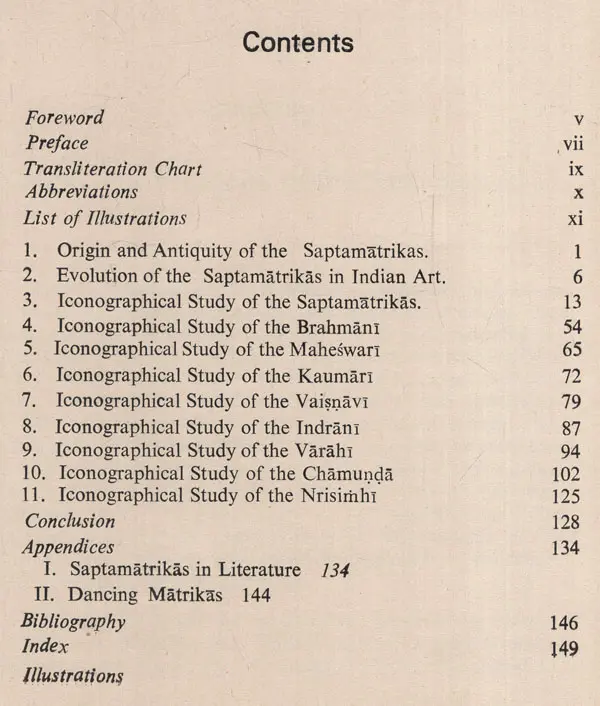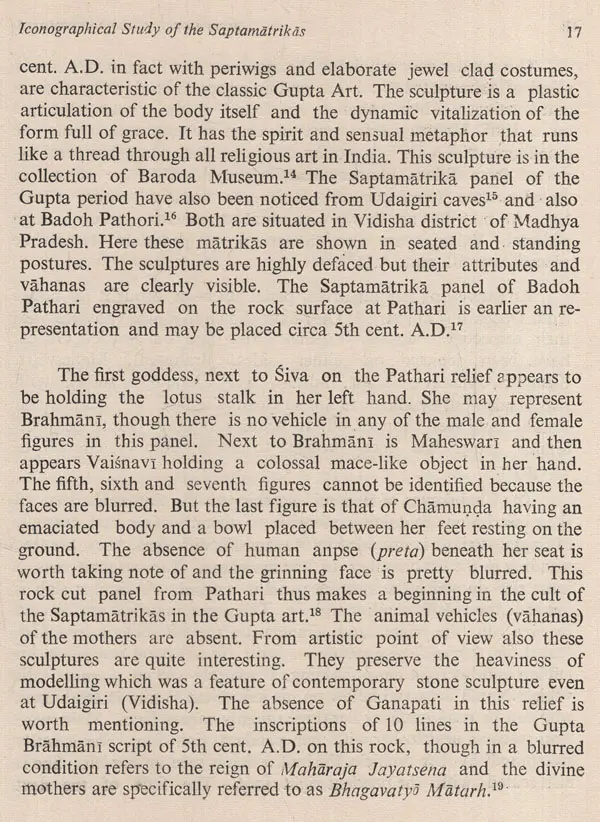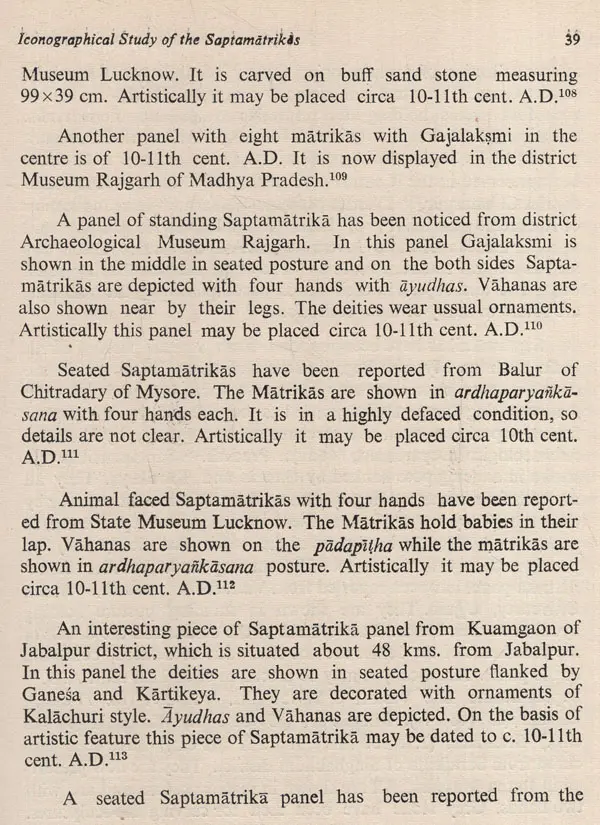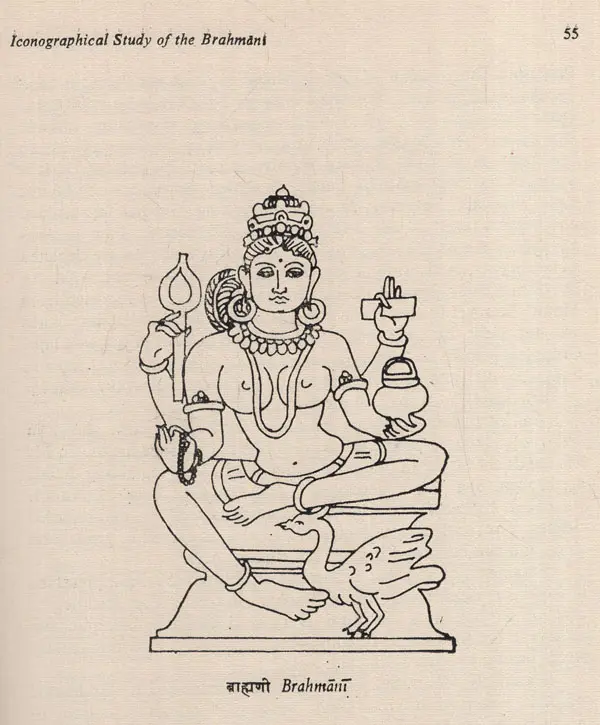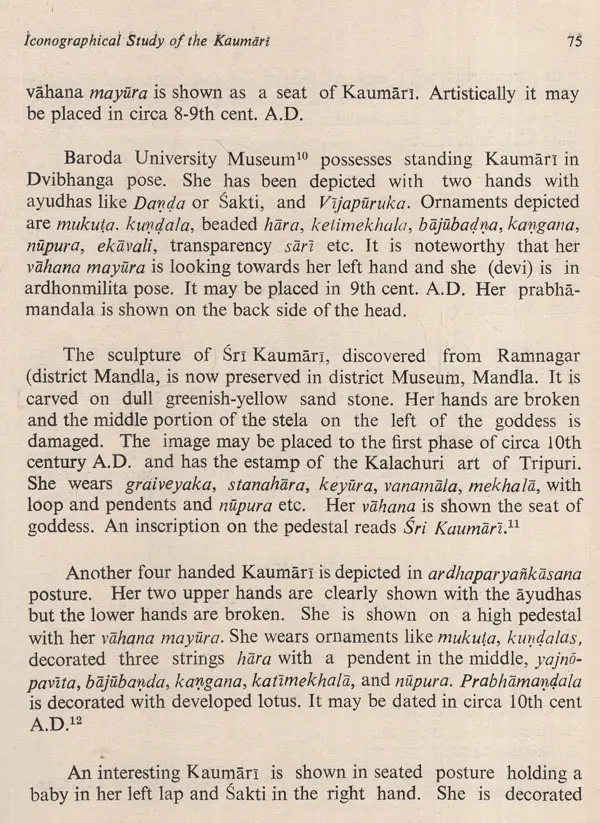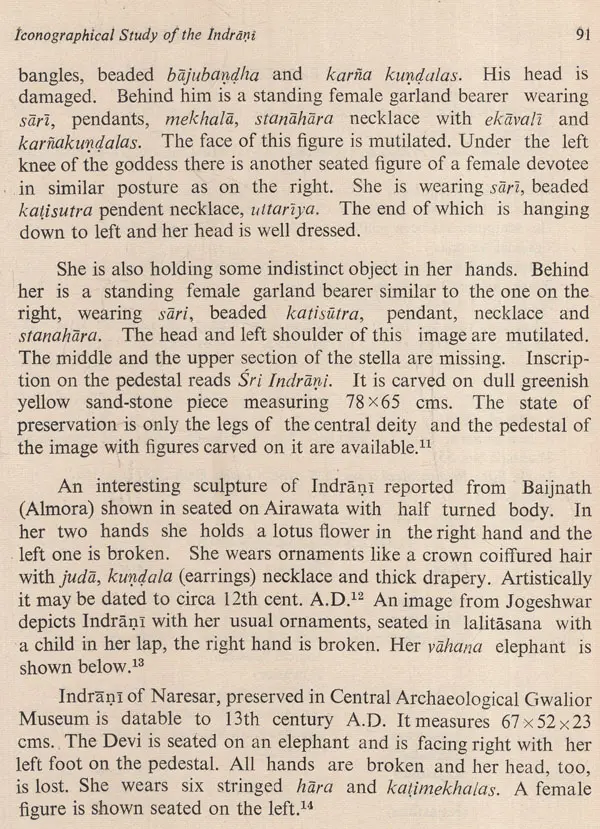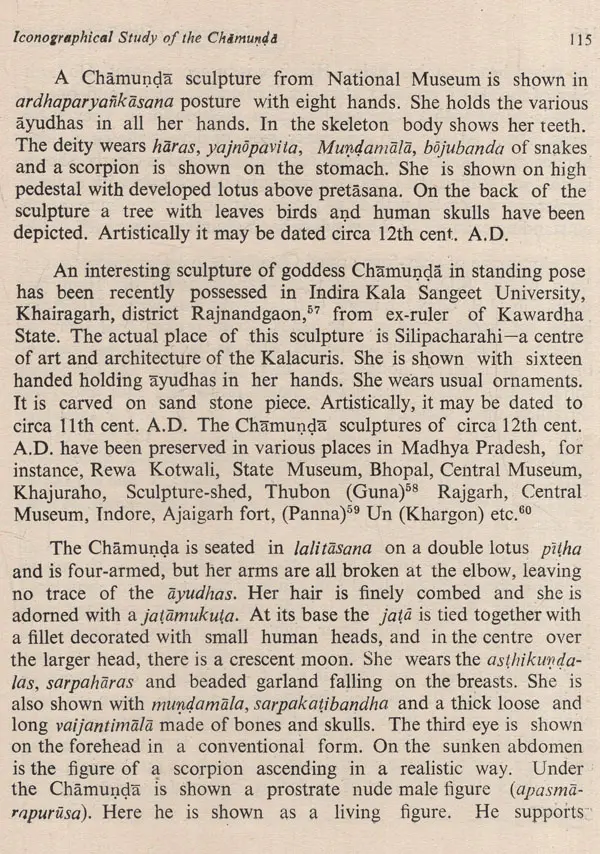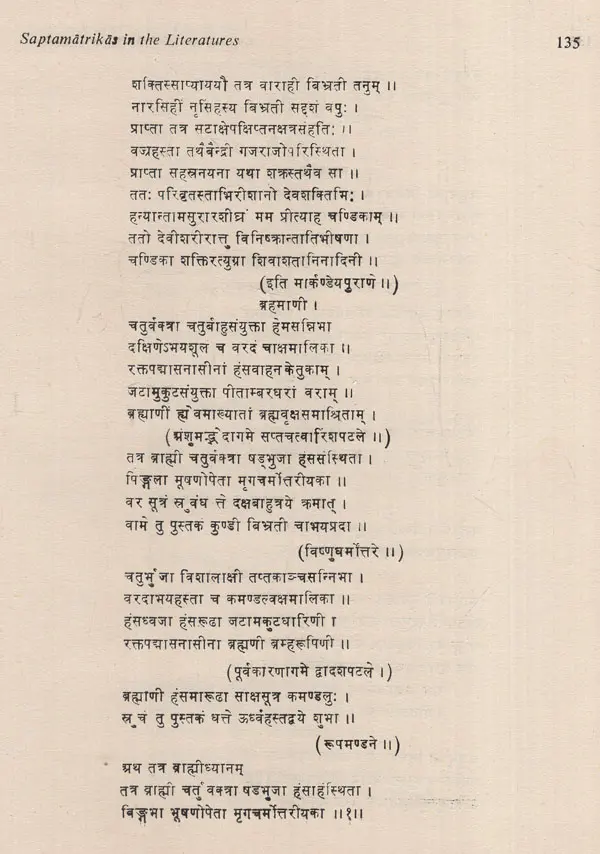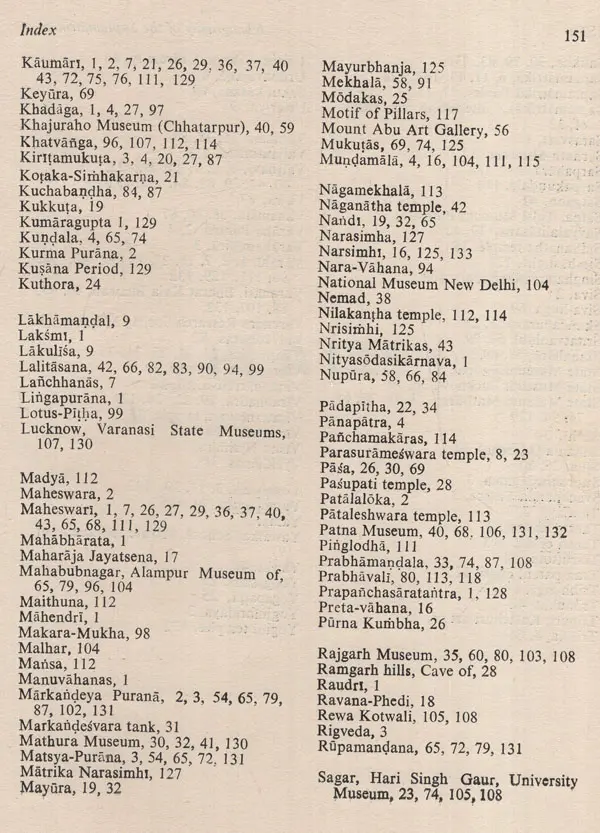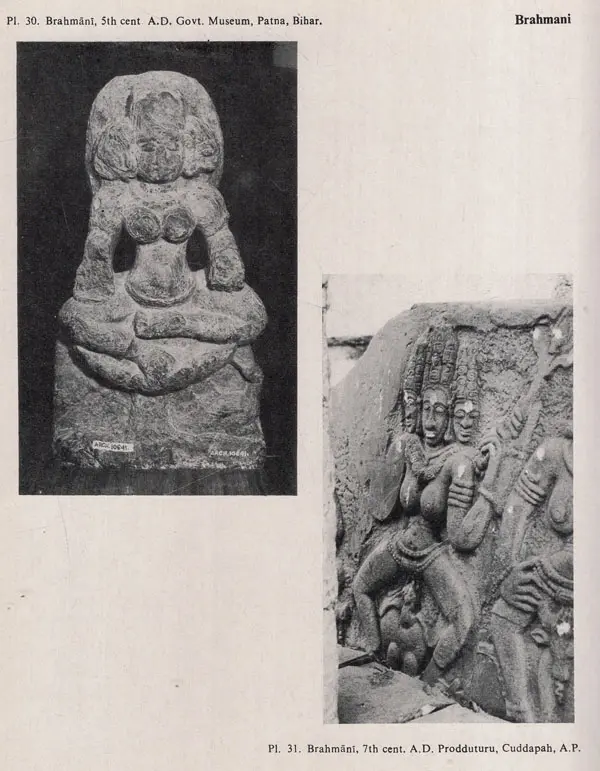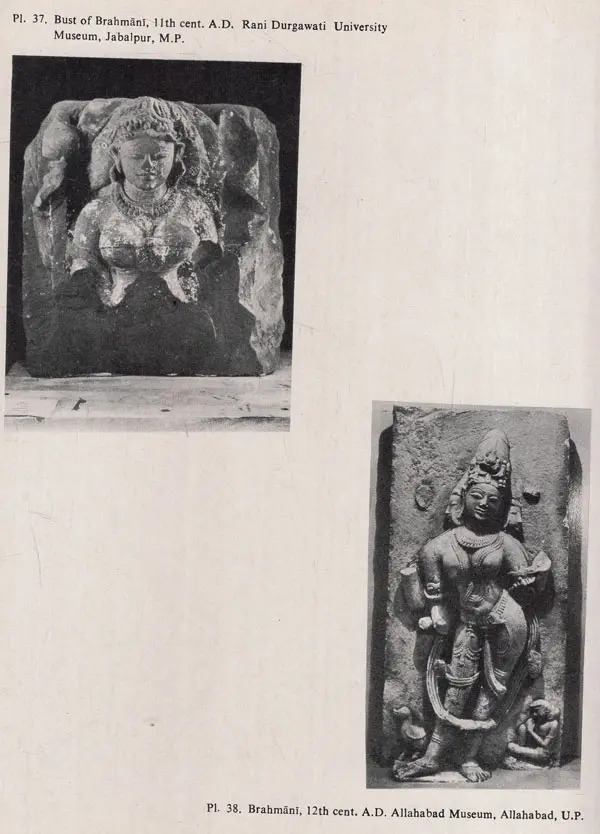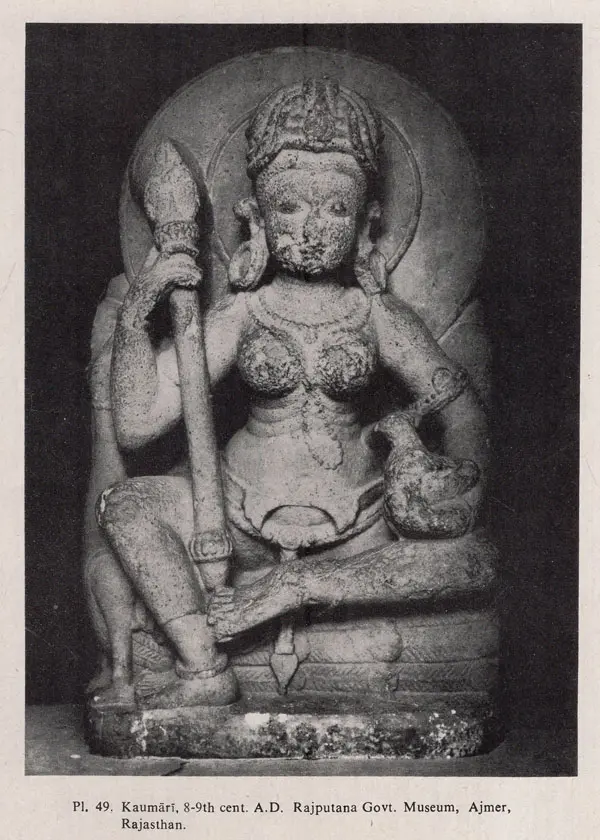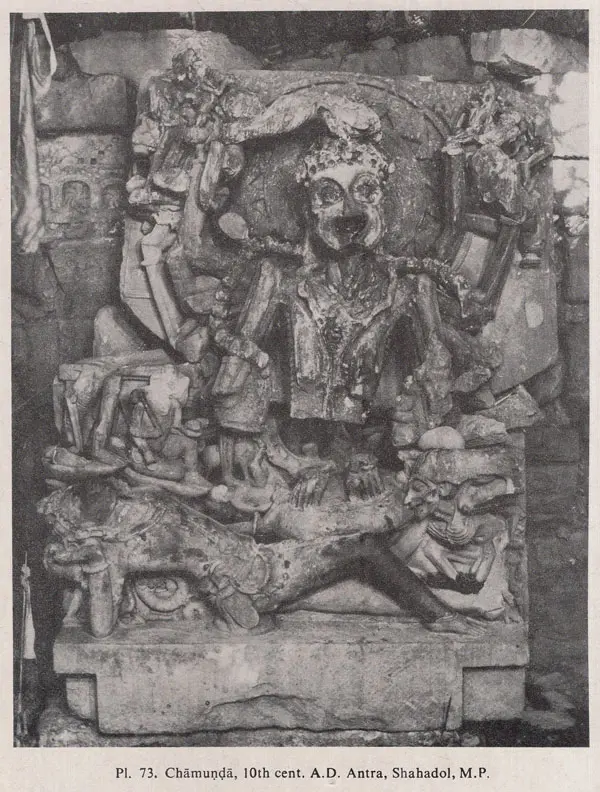
Iconography of the Saptamatrikas (An Old & Rare Book)
Book Specification
| Item Code: | UAP849 |
| Author: | O. P. Misra |
| Publisher: | Agam Kala Prakashan, Delhi |
| Language: | English |
| Edition: | 1989 |
| Pages: | 210 |
| Cover: | HARDCOVER |
| Other Details | 9.80 X 7.50 inch |
| Weight | 670 gm |
Book Description
A large number of Saptamatrika Panels and images have been noticed from the entire length and breadth of our country ranging from 1st cent. A.D. to 13th cent. A.D. In this book, the origin, development, regional styles and dynastic characteristics of these Saptamatrikas have been studies in a scientific manner.
A complete knowledge of Saptamatrika cult in India, its inscriptional evidences, a glimpse of the Saptamatrika pancls in chronological order, the important panels subjected to critical iconographic study based on extensive field work and the portrayal of the Saptamatrikas through eight five illustrations; all have made the book the first of its kind.
In the Department of Archaeology & Museums Dr. Misra is Associate Editor for Quarterly Journal 'PURATAN'. Being as Associate Editor he is involved in the Publication of the Department as Khajuraho in perspective, Saiva traditional in Indian Art-Special volume of Puratan Dangawada Exca vation and Puratan No. 7.
Recently Dr. Misra completed a monograph on Dasavatara in Central India - an Iconographical study which is in press. Indian Council of Historical Research, New Delhi is considering his project on Archaeo-Socio Study of Chhattisgarh for study for post-Doctoral Research on Mother goddess in Central India - an Iconographical study to study the Details of the Mother goddess Icons scattered in Central India And in the temple sites.
The Matrikäs are known to have originated as almost timeless folk divinities with both benevolent as well as malevolent aspects. There are copious references to the Matrikäs in the Mahabharata and the Puranas which deal with the myths of their origin and their forms and emphasize their group existence, leaving their number indefinite from seven to 190 or even more. According to early literary sources their benevolent functions were mainly connected with the protection of the foetus and the easy birth and welfare of the infant and the growing child, while their malevolent aspects were directly related to the destruction of the pretas and the infant and blood-sucking and harming the growing child. Until the early Kusaga period when they were first represented at Mathura in either human form or with animal faces, both their concept and number remained regular and it was only in the later Kuṣänä age that they came to be associated with god Kartikeya. Their exact number and functions, were however, not standardized until the early Gupta period, when that popular concept of a group of seven or eight Mothers finally crystallized. From the Gupta period onwards they were conceived as the 'energies' of the principal Brahmanical God, created especially to god Siva or Durga in the destruction of the Andhaka or Raktabija (aids of Sumbha and Nisumbha). The standard group of Sapta-Matrikas flanked by Virabhadra andjGanesa at the two ends thus emerged only with the growth of Puranic Saiva and Sakta cults, though several variations occasionally continued to be visualized extending their number from eight to sixteen.
In the three introductory chapters Dr. Misra has provided a sufficient account of the origin and development of the Matrikas from both literary and archaeological sources. The subsequent chapters furnish a detailed description, as well as period wise, of each Matrika against the relevant historical and cultural background. In the concluding chapter he has presented a critical analysis of the regional peculiarities after establishing the standard normal form common to all areas. The book thus offers a comprehensive view, through the ages, of an important group of Hindu divinities which have played a significant role in the evolution of the religious personality of India.
The Epic and Puranic literature gives a very interesting account regarding origin of the Matrikäs. The Mahabharata mentions that Siva was greately assisted by Saktis of other deities besides his own. Sakti Maheswari subduing the demon Andhakasura. The seven Mother Goddesses drank the blood issuing from the body of Andhaka and stopped multiplication of asuras and finally killed them. The Märkandeya Puränä also gives a similar account when goddesses Ambika and Chamunda were helped by other Goddesses in killing Raktavija an ally of Sumbha.
A large number of Saptamatrikā panels and images have been noticed from the entire length and breadth of our country ranging from 1st cent. A.D. to 13th cent. A.D. It is proposed to undertake an iconographical study of the Saptamatrikä images reported from in various monuments and in the possession of various museums, private bodies and individuals from the earliest times to 13th cent. A.D. Under this study origin, development, regional styles and dynastic characteristics will be studied in a scientific manner.
I owe a deep sense of gratitude to Prof. R.K. Sharma, of Jabalpur, for his encouragement and learned guidance in conducting research work on this topic. He has always been ready for discussions and offering scholarly suggestions.
**Contents and Sample Pages**

